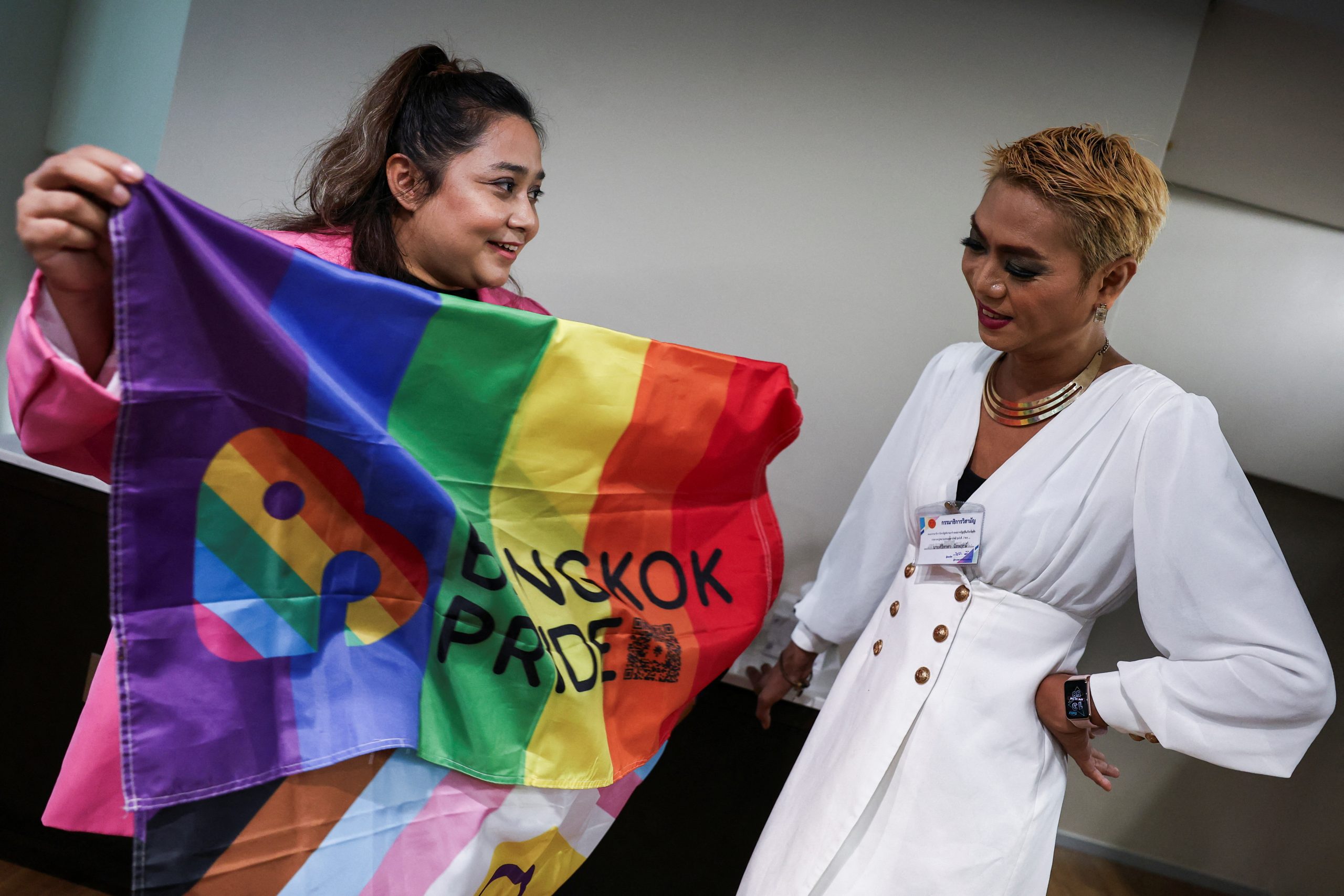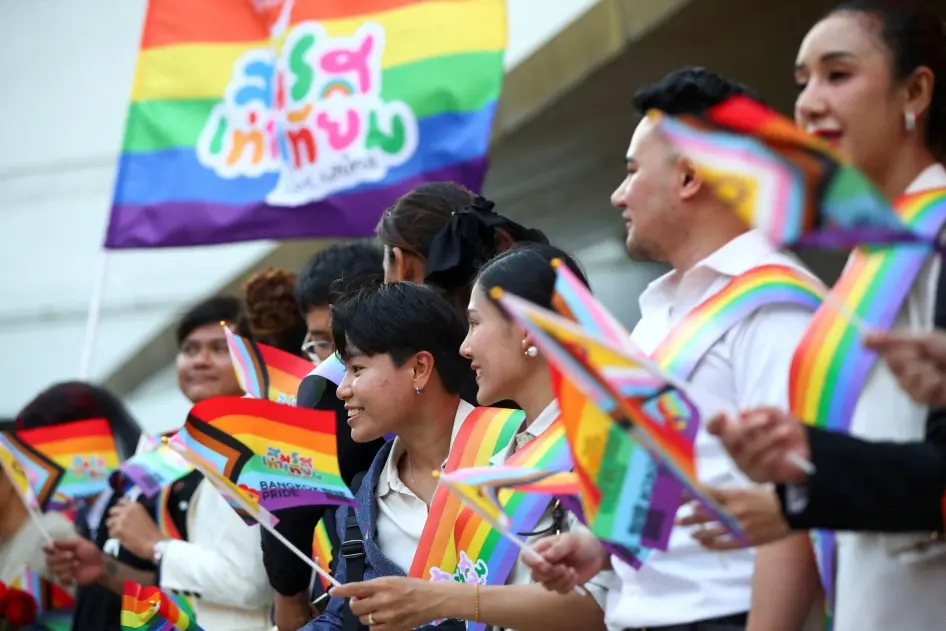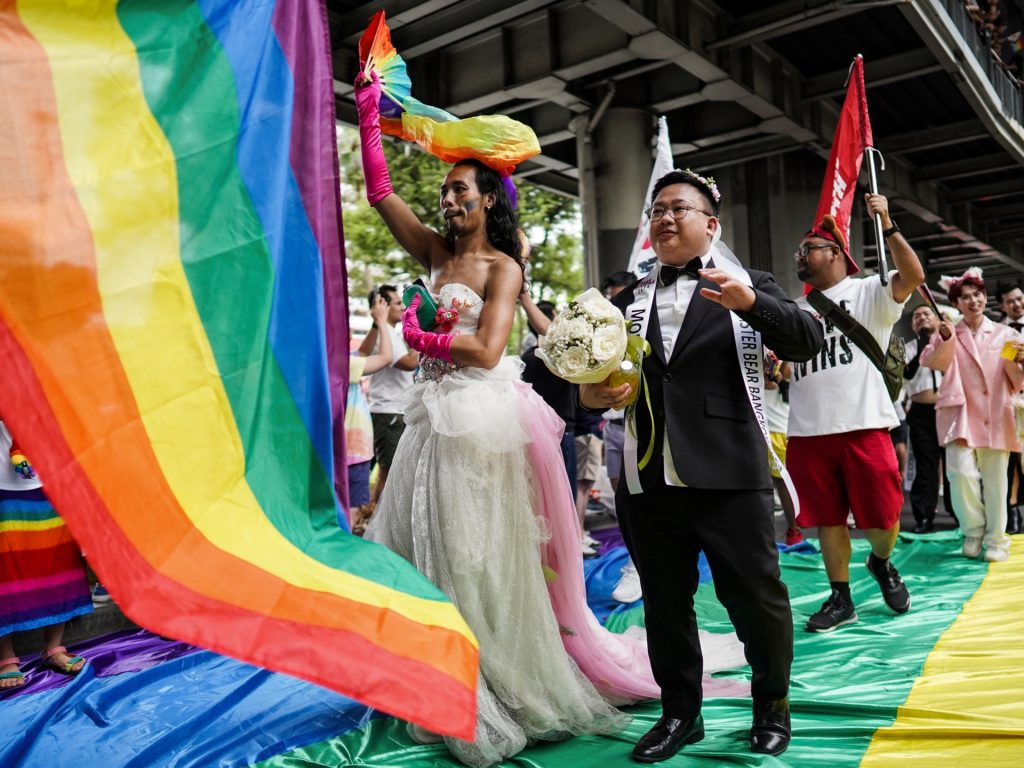Legal
How Are Wrongful Death Damages Calculated in Canada?

Understanding wrongful death damages in Canada is a complex process that requires careful examination of various factors. In Canada, the calculation of damages in wrongful death cases considers both economic and non-economic losses suffered by the deceased’s loved ones.
Economic damages typically include funeral expenses, loss of financial support, and loss of household services provided by the deceased. Non-economic damages, on the other hand, encompass emotional suffering, grief, and loss of guidance or care.
One important aspect to consider when evaluating wrongful death damages in Canada is the concept of losses suffered. Unlike some jurisdictions that focus solely on the financial impact.

Canadian courts recognize that bereaved family members also suffer emotionally and psychologically as a result of their loved one’s untimely demise. As such, courts often award significant compensation for non-economic losses to ensure that grieving families receive adequate support during their healing process.
Another key consideration when assessing wrongful death damages in Canada is determining who can claim compensation. Typically, immediate family members such as spouses or partners, children (including stepchildren), parents (including adoptive or foster parents), siblings and grandparents are eligible to seek compensation for their losses.
However, it is important to note that each province may have specific rules regarding eligibility criteria and the amount of compensation awarded for each type of loss.
Legal framework: Canadian laws and statutes
Personal injury lawyers play a crucial role in navigating the complex legal framework of Canadian laws and statutes surrounding wrongful death damages. These professionals are well-versed in the intricacies of the legal system, ensuring that their clients receive fair compensation for their losses. While each province in Canada has its own specific laws regarding wrongful death damages, there are some common principles that guide these calculations across the country.
In most cases, wrongful death damages in Canada are calculated based on two main factors: pecuniary losses and non-pecuniary losses. Pecuniary losses refer to the economic impact resulting from the deceased person’s death, such as loss of income or financial support.
Non-pecuniary losses, on the other hand, encompass intangible aspects like pain and suffering or loss of guidance and care. Determining an appropriate amount for each category can be challenging as it requires a deep understanding of various legal precedents and expert opinions.

Canadian personal injury lawyers work tirelessly to thoroughly assess all relevant factors when calculating wrongful death damages. They take into account not only the immediate effects but also long-term considerations, such as future earning potential, medical expenses, funeral costs, and psychological trauma experienced by surviving family members.
By considering these numerous elements within existing legal frameworks, personal injury lawyers can ensure that bereaved families receive just compensation for their unimaginable loss.
Types of damages: pecuniary and non-pecuniary
When it comes to calculating wrongful death damages in Canada, there are two main types that are considered: pecuniary and non-pecuniary. Pecuniary damages refer to the financial losses suffered by the deceased individual’s family as a result of their untimely demise. This can include expenses such as funeral costs, medical bills, lost earnings, and future earning potential.
On the other hand, non-pecuniary damages focus on compensating for the intangible losses experienced by the surviving family members. These damages acknowledge the emotional pain, suffering, and loss of companionship endured due to the loss of their loved one.
It takes into account factors such as grief and bereavement, loss of guidance and care (particularly in cases involving dependent children), and even psychological trauma experienced by those left behind.
In determining both types of damages, various factors come into play including the age and health conditions of the deceased person at the time of death, their relationship with surviving family members, and contributions made to their household or dependents before death took place.
While pecuniary damages tend to be more straightforward since they can be reasonably quantified through available records and evidence; assessing non-pecuniary damages poses challenges due to its subjective nature. Courts rely on precedents set in similar cases while considering factors like grief counseling requirements or expert opinions on psychological impact to determine these intangible costs fairly.
Factors considered in calculating damages
Calculating damages in a wrongful death case involves several factors that must be carefully considered. One crucial element is the economic loss suffered by the deceased person’s family as a result of their passing. This includes evaluating their future earning potential, lost financial support for dependents, and any medical or funeral expenses incurred.
Additionally, non-economic factors are taken into account, such as loss of guidance and care for children left behind, loss of companionship for a surviving spouse or partner, and the emotional pain and suffering endured by family members.

Another important aspect in determining damages is the age of the deceased person at the time of death. Younger individuals typically have longer life expectancies and thus greater potential future earnings, resulting in higher economic damages awarded to their families. Conversely, older individuals may receive lower economic damages due to a shorter period that would have been feasible for them to work or contribute financially.
Specific circumstances surrounding the wrongful death can impact both economic and non-economic damages calculation. For example, if the action causing death was particularly reckless or intentional on part of the defendant (e.g., driving under the influence), courts might award punitive damages on top of compensatory ones to punish wrongdoers adequately.
Challenges in calculating wrongful death damages
Calculating wrongful death damages can be a complex and challenging process due to various factors. One of the main difficulties lies in determining the economic loss suffered by the deceased’s family members. Unlike personal injury claims, where future earnings can be estimated based on past earnings, calculating future income for the deceased is more complicated. Factors such as age, occupation, earning capacity, and potential career advancements all need to be considered.
Another challenge arises from assessing non-economic damages in wrongful death cases. Non-economic damages aim to compensate family members for their emotional suffering and loss of companionship due to the death of their loved one.
However, putting a monetary value on such intangible losses is extremely subjective and difficult to quantify accurately. Each individual’s experience of grief and emotional pain may vary greatly, making it challenging for courts to determine an appropriate amount of compensation.
In conclusion, despite efforts made by legal systems across Canada to provide fair compensation for wrongful death cases, calculating damages remains a challenging task. The complexity lies in accurately estimating future economic losses and assigning a value to non-economic damages that truly reflect the impact experienced by each family member.
As legal professionals continue to grapple with these challenges, it becomes even more crucial for families affected by wrongful deaths to seek expert guidance in order to ensure their rights are fully protected during this difficult time.

Legal
Thai Court Amends Law to Allows Wives to Sue Husband’s Lovers

Thailand’s Constitutional Court has changed the Civil Code will allow women to sue their husbands’ lovers, male or female. The Constitutional Court found on Tuesday that Section 1523 of the Civil Code breached Section 27 of the constitution, which safeguards Thais’ rights and liberties regardless of gender.
The court directed that the verdict be enforced within 360 days.
Section 1523 of the Civil Code states that husbands can sue their wives’ lovers, and wives can sue other women who publicly display an adulterous connection with their husband.
Keirov Kritteeranon, secretary-general of the Office of the Ombudsman, stated that the Ombudsman had previously urged the court to rule on the legality of Section 1523, which allowed wives to suit only female lovers.
Husbands can now sue their wives’ boyfriends regardless of gender, and there was no requirement for any public declaration of an adulterous connection, he claimed.
Once enforced, Tuesday’s Constitutional Court order, according to the Ombudsman, will correct this imbalance.
Thailand Amends Marriage Law
Meanwhile, Thailand is set to become the first Southeast Asian country to recognise same-sex marriage, after its marriage equality law was passed in the Upper House on Tuesday and is now on its approach to being promulgated before going into effect in the coming months.
LGBTQ+ advocates rejoiced as the Senate voted 130-4 to pass the bill on its final reading, with 18 abstentions. They hailed the development as a win in their long struggle for equal rights.
When the advocates who had gathered at parliament on Tuesday to witness the Senate’s final reading and vote on the measure heard the outcome, they burst out in cheers.
They next went to authorities House, where the authorities had planned a celebratory reception for them later in the day. They then went to the Bangkok Art and Culture Centre, where the party lasted until late at night.
Prime Minister Srettha Thavisin, who is on sick leave due to Covid-19, congratulated them via Zoom call from Government House.
The new law will allow any two people aged 18 or older to register their marriage and obtain the same advantages and rights as heterosexual couples. The bill refers to married couples as “two individuals” rather than “a man and a woman,” and changes their legal status from “husband and wife” to “spouses.”
LGBTQ+ people from any country can legally marry in Thailand. When the bill goes into force, foreign same-sex married partners will be eligible for a spousal visa.
The law will be sent to the government for approval before being presented to the monarch.
It will take effect within 120 days of its publication in the Royal Gazette, making Thailand the third Asian country to accept same-sex marriages after Nepal and Taiwan.
Senator Kamnoon Sidhisamarn, spokesman for the Senate’s special committee evaluating the proposed law, called it a victory for equal rights campaigners.
“There is no reason for the Upper House to disagree with the judgement made by the House of Representatives,” he told reporters. He was referring to the legislation’s passage in the Lower House prior to its submission to the Senate for approval.
The battle for same-sex marriage legislation began 23 years ago. Tunyawaj Kamolwongwat, a Move Forward Party list-MP, said that the law’s passage on Tuesday signified the beginning of a new chapter in Thai history.
Source: Bangkok Post
Court Upholds Israel’s Ban on News Agency Al Jazeera
Legal
Thailand’s Senate Passes Landmark Marriage Equity Bill Legalizing Gay Marriage

Thailand’s Senate has approved a long awaited marriage equality bill on Tuesday, making the country the third Asian country to accept same-sex couples. The Senate approved the law 130-4 with 18 abstentions.
The marriage equality bill will be sent the palace for royal clearance. The marriage equality law takes 120 days to take effect after Royal Gazette publication.
LGBTQ+ advocates welcomed the proposal a “monumental step forward” because Thailand would be the first Southeast Asian country to legalise marriage equality. Thailand is popular with travellers due to its LGBTQ+ culture and tolerance.
“This would underscore Thailand’s leadership in the region in promoting human rights and gender equality,” the Civil Society Commission of marriage equality, activists, and LGBTI+ couples said.
Prime Minister Srettha Thavisin, who wore a rainbow shirt to commemorate Pride Month, joined thousands of LGBTQ+ revellers and activists in a Bangkok parade at the start of June.
The prime minister will open Government House to commemorate the bill’s passage. Pride supporters will march from Parliament to the prime minister’s office. Mr. Srettha, who has Covid-19, will join them online after taking several days off.
Deputy Prime Minister and Commerce Minister Phumtham Wechayachai anticipates June’s Pride Month to create approximately 4.5 billion baht in economic cash flow.

Pride Month in Thailand
On Saturday, Mr. Phumtham said the government under Prime Minister Srettha Thavisin is encouraging sexual diversity and working with the commercial sector to plan more Pride Month festivities to attract LGBTQ+ tourists.
He claimed it will increase the country’s trade potential by giving SMEs business expansion chances and adding soft power value.
Mr. Phumtham claimed Poonpong Naiyanapakorn, director-general of the Trade Policy and Strategy Office, told him Pride Month celebrations will make Thailand a “pride-friendly destination” for LGBTQ+ Thai and global consumers.
This would help the country become a regional tourism hub under the government’s “Ignite Tourism Thailand” initiative to enhance tourism in 55 “worth visiting” provinces.
He added that such festivals will support downstream industries like event planners, food and beverage companies, hotels, and transport services and disperse cash to local areas. Mr. Phumtham stated Thailand’s Pride Month began in 1999. Bangkok, Chiang Mai, Phuket, and Chon Buri host parades, festivities, and campaigns.
The Tourism Authority of Thailand (TAT) expects approximately 860,000 people to attend this year’s festival and contribute at least 4.5 billion baht for the economy. LGBT Capital estimates that the world’s LGBTQ+ population has US$4.7 trillion in purchasing power and Thailand’s sexually varied population has US$26 billion.
LGBTQ+ rights in Thailand are improving, but there’s still much to do. The LGBTQ+ community in Thailand is notably strong in Bangkok and Pattaya.
Strong legal recognition allows transgender people to change their names and titles. Many LGBTQ+ couples lack legal rights since same-sex marriage is banned.

LGBTQ+ rights in Thailand
Thailand is becoming more accepting despite these difficulties. LGBTQ+ rights are gaining favour. Activists want legal changes to guarantee equality.
Pride parades are becoming increasingly visible, demonstrating diverse acceptance. While challenges remain, LGBTQ+ rights in Thailand are improving as awareness and acceptance expand.
Legal
Protecting Your Designs: Intellectual Property Rights in the Jewelry Manufacturing Industry

The jewelry manufacturing industry is a vibrant and highly competitive sector where creativity and innovation are paramount. Designers invest significant time, effort, and resources into crafting unique pieces that appeal to consumers’ tastes and preferences. However, this industry faces a persistent challenge: the protection of original designs from imitation and unauthorized use.
Intellectual property rights (IPR) play a crucial role in safeguarding jewellery designs, ensuring that creators receive recognition and financial benefits from their work. This article delves into the various forms of intellectual property rights pertinent to the jewelry manufacturing industry and offers insights on how designers can protect their creations.
Understanding Intellectual Property Rights
Intellectual property rights are legal mechanisms that grant creators exclusive rights to their inventions, designs, and artistic works. These rights encourage innovation by providing creators with the means to control the use of their creations and to benefit financially from them. In the context of jewelry design, the most relevant forms of IPR are copyrights, trademarks, patents, and design rights.
Copyrights
Copyright protection extends to original works of authorship, including artistic creations such as jewelry designs. Under copyright law, the designer of a piece of jewelry automatically acquires the exclusive right to reproduce, distribute, and display the design upon its creation. This protection does not require registration, although registering the copyright with the appropriate governmental body, such as the U.S. Copyright Office, can provide additional legal benefits and evidence of ownership.
For jewelry designers, copyright protects the aesthetic aspects of a piece, such as the specific design, patterns, and artistic expressions. However, it does not cover the functional elements or the materials used. The duration of copyright protection varies by country, but it typically lasts for the life of the creator plus an additional 50 to 70 years.
Trademarks
Trademarks protect symbols, names, logos, and slogans that distinguish goods and services in the marketplace. For jewelry manufacturers, a trademark can cover the brand name, logo, or even a unique product line name.
Registering a trademark with the appropriate authority, such as the United States Patent and Trademark Office (USPTO), provides nationwide protection and the exclusive right to use the mark in connection with the specified goods or services.
A strong trademark helps consumers identify and differentiate a brand’s products from those of competitors, fostering brand loyalty and reducing the risk of confusion in the marketplace. It also provides legal recourse against counterfeiting and unauthorised use of the brand’s identity.
Patents
Patents protect new inventions and technical innovations. In the jewelry industry, this could include innovative manufacturing processes, unique mechanisms for adjustable or interchangeable jewelry, or novel materials and techniques. A patent grants the inventor the exclusive right to use, make, and sell the invention for a limited period, usually 20 years from the filing date of the patent application.
Obtaining a patent involves a rigorous process of proving that the invention is novel, non-obvious, and useful. For jewelry designers, the primary benefit of patent protection lies in safeguarding their innovative techniques and mechanical features, which can provide a competitive edge in the market.
Design Rights
Design rights specifically protect the visual appearance of a product, including its shape, configuration, pattern, and ornamentation. These rights are particularly relevant to the jewelry industry, where the aesthetic appeal of a product is a key selling point. In many jurisdictions, design rights must be registered to be enforceable, though some countries offer unregistered design rights that provide limited protection.
Registering a design right involves submitting detailed representations of the design to the relevant authority, such as the European Union Intellectual Property Office (EUIPO) for protection within the EU. Registered design rights typically offer protection for up to 25 years, subject to renewal fees.
Steps to Protect Jewelry Designs
- Document Your Designs: Maintain detailed records of your design process, including sketches, prototypes, and finished pieces. This documentation can serve as evidence of originality and ownership in case of disputes.
- Conduct Searches: Before launching a new design, conduct thorough searches to ensure it does not infringe on existing intellectual property. This can prevent legal issues and costly disputes.
- Register Your IP: Where applicable, register your copyrights, trademarks, patents, and design rights with the appropriate authorities. Registration enhances protection and provides legal advantages in enforcing your rights.
- Use NDAs and Contracts: When working with manufacturers, suppliers, and collaborators, use non-disclosure agreements (NDAs) and detailed contracts to protect your designs and outline the terms of use. ( Check out EJ: A Jewelry Manufacturer with NDA’s.
- Monitor the Market: Regularly monitor the market for potential infringements. This can involve online searches, attending trade shows, and staying informed about competitors’ activities.
- Take Legal Action if Necessary: If you discover an infringement, take prompt legal action to enforce your rights. This may involve sending cease-and-desist letters, pursuing litigation, or seeking alternative dispute resolution methods.
Challenges and Considerations
While intellectual property rights offer significant protection, there are challenges and limitations to consider. The cost and complexity of obtaining and enforcing IPR can be prohibitive, especially for small designers and startups. Additionally, the global nature of the jewelry market means that protections obtained in one jurisdiction may not be recognized elsewhere, necessitating international strategies for comprehensive protection.
Moreover, the fast-paced nature of fashion and jewelry trends can make lengthy registration processes impractical for certain designs. In such cases, relying on unregistered design rights or focusing on brand protection through trademarks may be more viable strategies.
Conclusion
Intellectual property rights are a vital tool for protecting the creativity and innovation that drive the jewelry manufacturing industry. By understanding and strategically utilizing copyrights, trademarks, patents, and design rights, designers can safeguard their creations, enhance their competitive edge, and ensure they reap the financial rewards of their ingenuity. As the industry continues to evolve, staying informed about IPR and adapting to emerging challenges will be crucial for sustaining success in the dynamic world of jewelry design.
People Also Reading:
Law Firm Chastised for Using OpenAI ChatGPT for Legal Research
Law Firm Chastised for Using OpenAI ChatGPT for Legal Research
-

 News3 years ago
News3 years agoLet’s Know About Ultra High Net Worth Individual
-
Entertainment2 years ago
Mabelle Prior: The Voice of Hope, Resilience, and Diversity Inspiring Generations
-

 Health4 years ago
Health4 years agoHow Much Ivermectin Should You Take?
-

 Tech2 years ago
Tech2 years agoTop Forex Brokers of 2023: Reviews and Analysis for Successful Trading
-

 Lifestyles3 years ago
Lifestyles3 years agoAries Soulmate Signs
-

 Movies2 years ago
Movies2 years agoWhat Should I Do If Disney Plus Keeps Logging Me Out of TV?
-

 Health3 years ago
Health3 years agoCan I Buy Ivermectin Without A Prescription in the USA?
-

 Learning3 years ago
Learning3 years agoVirtual Numbers: What Are They For?











